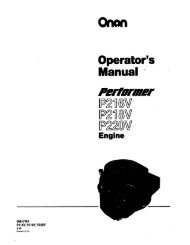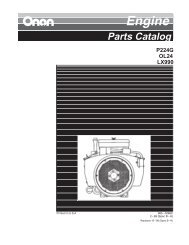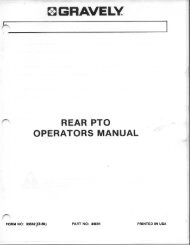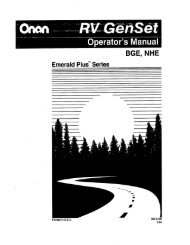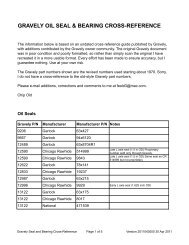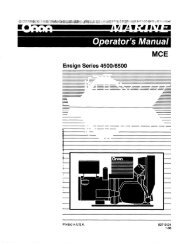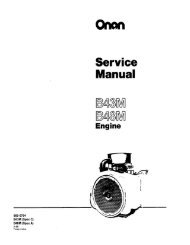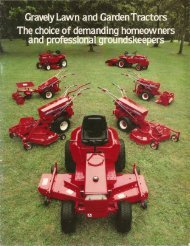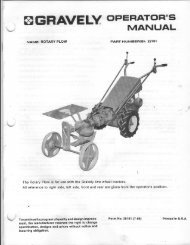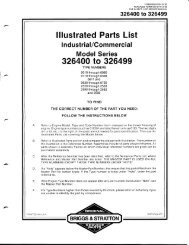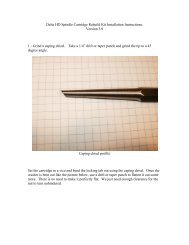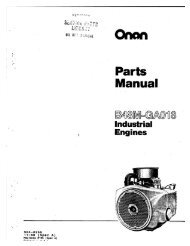272144 Vanguard Twin Cylinder OHV BRIGGS & STRATTON.pdf
272144 Vanguard Twin Cylinder OHV BRIGGS & STRATTON.pdf
272144 Vanguard Twin Cylinder OHV BRIGGS & STRATTON.pdf
You also want an ePaper? Increase the reach of your titles
YUMPU automatically turns print PDFs into web optimized ePapers that Google loves.
EQUIPMENT PROBLEMS AFFECTING ENGINE OPERATION<br />
Frequently, what appears to be an engine problem<br />
may be the fault of the equipment powered rather<br />
than the engine itself. Since many types of equipment<br />
are powered by Briggs & Stratton engines, it is<br />
impossible to list all the conditions that can exist.<br />
Listed below are some common equipment<br />
problems, and what to look for as the probable cause.<br />
Hard Starting or Will Not Start<br />
1. Loose belt or blade – a loose belt or blade can<br />
cause a backlash effect that will counteract<br />
engine cranking effort.<br />
2. Starting under load – be sure the unit is<br />
disengaged when engine is started; if the unit<br />
remains engaged, it should not have a heavy<br />
load when starting.<br />
3. Check remote control assembly for proper<br />
adjustment.<br />
4. Check interlock system for shorted wires, loose<br />
or corroded connections, or defective modules<br />
or switches.<br />
Engine Will Not Stop<br />
1. Check equipment ignition stop switch.<br />
2. Check for loose or disconnected equipment stop<br />
switch wire.<br />
3. Check ground wire harness (current style) or<br />
ground terminal (early style) on engine. See test<br />
procedure.<br />
Vibration<br />
1. Cutter blade bent or out of balance – remove and<br />
balance.<br />
2. Mounting bolts loose – tighten bolts.<br />
Power Loss<br />
1. Bind or drag in unit – If possible, disengage<br />
engine. Operate unit manually to check for<br />
binding.<br />
2. Grass cuttings built-up under deck.<br />
3. No lubrication in transmission or gear box.<br />
4. Excessive drive belt tension may cause seizure.<br />
Noise<br />
1. Cutter blade coupling or pulley – an oversize or<br />
worn coupling can result in knocking, usually<br />
under acceleration. Check for fit or tightness.<br />
2. No lubricant in transmission or gear box.<br />
64




